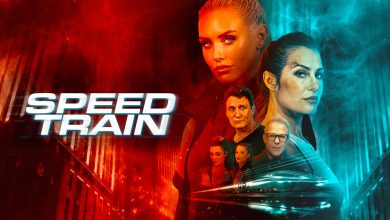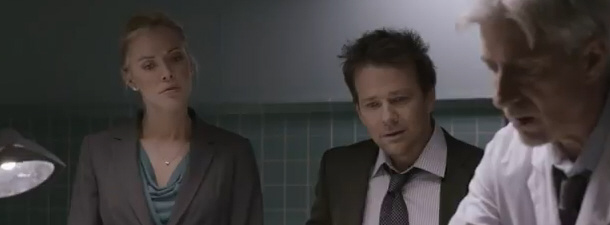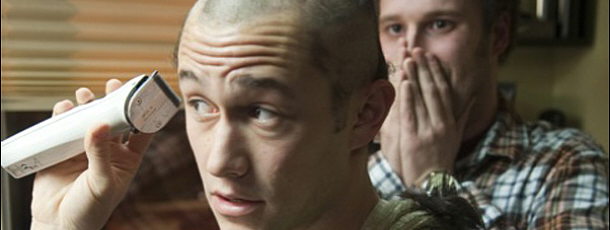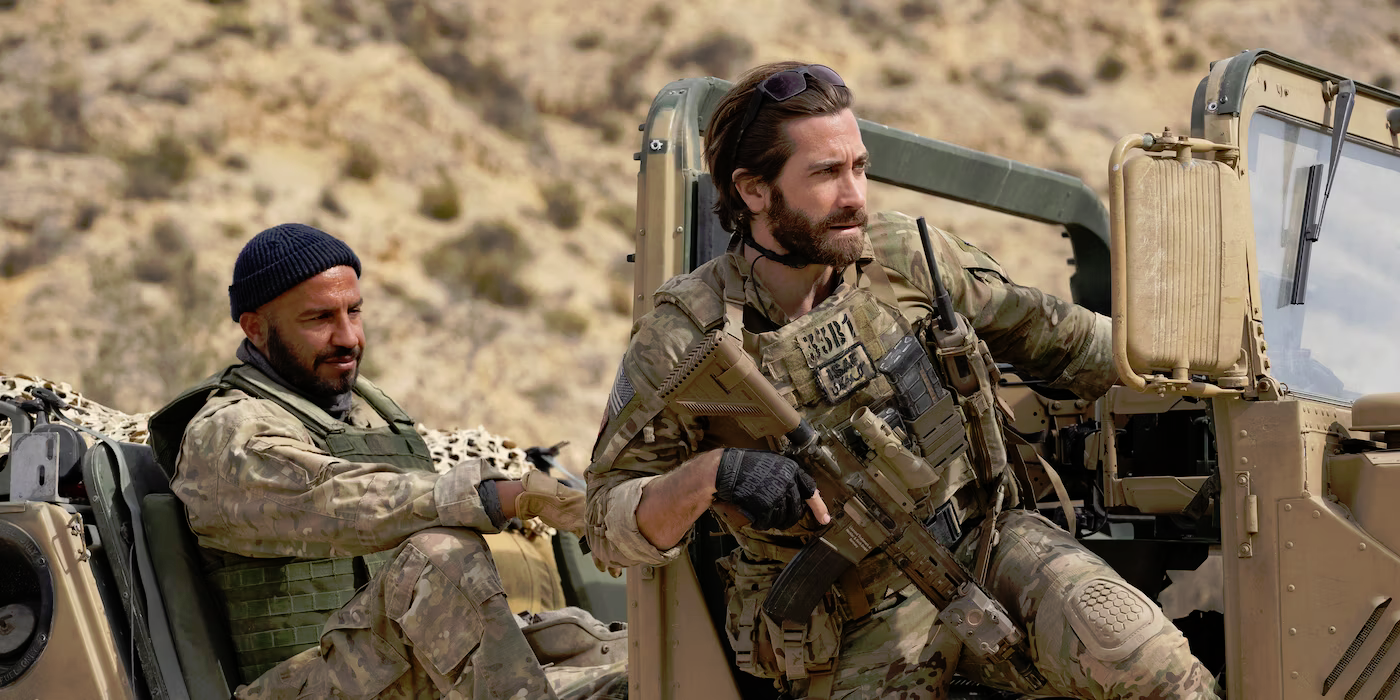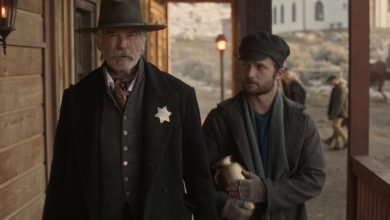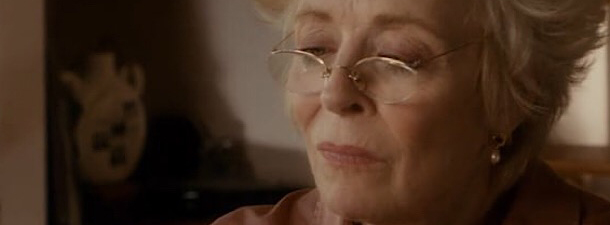
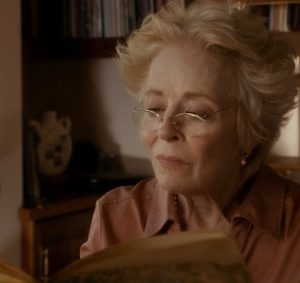 Amy Glazer is a theater professional who currently serves as the Associate Artistic Director at the SF Playhouse. She has many ties to numerous other theaters in both the United States and abroad and has directed plays from famed playwrights including Sam Shepard. Her work has also been presented at the lauded Edinburgh Fringe Festival in Scotland.
Amy Glazer is a theater professional who currently serves as the Associate Artistic Director at the SF Playhouse. She has many ties to numerous other theaters in both the United States and abroad and has directed plays from famed playwrights including Sam Shepard. Her work has also been presented at the lauded Edinburgh Fringe Festival in Scotland.
Aside from working on stage, Amy is comfortable directing films which can be found on Netflix and VOD. Thus far, her films (“Ball Lightning,” “Drifting Elegant,” “Seducing Charlie Barker”) have all been based on plays that she had worked on previously, thus securing the bonds between the stage and the screen.
Amy is also a theater and film professor at San Jose State University and she is presently working on a new movie titled “Kepler’s Dream” which tells the story of an eleven-year-old city-raised girl who spends the summer at her grandmother’s secluded ranch in New Mexico.
Recently, Amy granted and exclusive interview where she discussed this project, her career, and more.
Meagan Meehan (MM) of Movie Vine: What inspired you to become a filmmaker?
Amy Glazer (AG): Being on the set all summer long with my brother as my uncle, Sidney Glazier, produced “The Producers.” That planted the first real seed for both me and, I suspect, my writer/director/producer brother. I remember every inch of the scenes we witnessed being filmed. Being in the grand Broadways theater for the “Springtime for Hitler” dance number and on the sound-stage has Zero Mostel worked the old ladies for cash in various settings. I remember thinking this is real magic. And just being a fly on the wall as Mel Brooks would do his thing with Gene Wilder and Zero, well it was like nothing else I had ever before witnessed. Yep, that’s when the seed was planted. I don’t think I understood at that moment that I wanted to be a director, but it was clear to me that this was a world I wanted to live inside of- somehow, someway.
MM: How did you hatch the script for “Kepler’s Dream”?
AG: Well, it began with the desire to stay true to Sylvia’s novel and sensibility. This was a story for her readers and I wanted them to recognize the initial and impulse of the book. So, I began with the text from the novel, which I read over and over in order to internalize the story and plot points. I then created a chain of events and inciting incidents, compartmentalizing then into individual scenes. I stripped the book of everything but dialogue and began by pasting that into those scenes, and in scenes of description or interior thoughts, I looked for opportunities through character behavior to reveal a similar sensibility. All of this was woven in to the screenplay format. And from that ground plan, I began filling in a visual story.
I would share each iteration of the script with Sylvia, and get her notes and input. And then when the actual story/script was in place, I began looking at different scenes and rearranging/ reordering them, to some extent, then cutting what seemed unnecessary from the chain of events in order to set up the shape and arc of the film version of her story and to fit it into a three-act structure. Sylvia was in London working on her next novel at the time, so we would often Skype these conference calls so I had a better sense of her response in reaction. And after each of our sessions, I would go back and begin refreshing and reworking the story. When I felt that I had something solid I began giving it out for notes. Mitch Glazer, Cinco Paul and Pat Resnick (in that order) where the three writers that I trusted and relied on… and I tried to shut out the other white noise and just focus on their response, their questions and their instincts. And I guess, that’s how the story was hatched.
MM: Are you typically a big fan of making films that are suitable for the whole family?
AG: No not really. Every film for me, and every story has its own special audience and its own unique appeal to me. But I do like the idea of telling a story that an entire family can experience together – especially with younger kids.
MM: Do any writers inspire you in particular in the family-friendly genre?
AG: I would have to say (for this genre) Cinco Paul. He gave us some really helpful feedback when we were developing the screenplay. He went to college with Sylvia and was very generous and astute with his dramaturgical notes.
MM: Can you tell us about the cast of “Kepler’s Dream”?
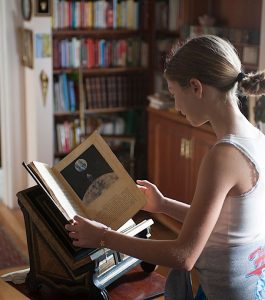 AG: Well at the core of the story is Holland Taylor, the grandmother Ella has never met. She is larger than life, a no-nonsense gal who we come to realize shares with Ella a great love of books and animals. Holland is fabulous. She’s bold, funny and smart, a joy/gift to work with. And then there is Kelly Lynch, my sister-in-law, who plays Ella’s mother, Amy. Kelly’s work in this was so brave and authentic. It was really wonderful to finally get a chance to work together.
AG: Well at the core of the story is Holland Taylor, the grandmother Ella has never met. She is larger than life, a no-nonsense gal who we come to realize shares with Ella a great love of books and animals. Holland is fabulous. She’s bold, funny and smart, a joy/gift to work with. And then there is Kelly Lynch, my sister-in-law, who plays Ella’s mother, Amy. Kelly’s work in this was so brave and authentic. It was really wonderful to finally get a chance to work together.
Sean Patrick Flanery plays Ella’s father. It’s a complicated role. We vilify the father at first, but come to see how tragically wounded he has been by his mother and the family secrets she was not willing to disclose. Sean found such complexity and nuance in the character. He felt so truthful in his betrayal. His work with the Holland, Kelly and Isabella (Ella) is heartbreaking and very moving. And then there were the smaller supporting roles which we cast in New Mexico – and each one again felt true to the novel and three-dimensional because we found such marvelous actors to work with and to embody these characters. We all referenced the original source material of the book, so that was our “point of agreement” in fleshing out character details and qualities. Again, I included Sylvia in all of these choices to be sure the characters we were casting reflected the world she had originally built. As much as possible I also included her in my initial table work with the cast, so that when there were questions about a character’s motivation or subtext, she could help imbue our choices with her original impulses from the novel.
MM: What was it like to be on the set of “The Producers”? Do you have any funny behind the scenes stories and what was Mel brooks like?
AG: It was surreal and magical. I remember sitting in this Broadway theater watching the big “Springtime for Hitler” dance number, and there were these women dressed as Nazis with swastikas on her nipples in a kick line, and I remember feeling compelled and also somewhat confused and embarrassed, not understanding the tone Mel was going for since I was nine years old at the time. In retrospect I was like a kid in a Fellini film… Watching the grown-ups like a fly on the wall. I still sometimes answer the phone “Bialystock and Bloom” It all seemed slightly pornographic and dreamlike.
I remember my brother and I (between takes) getting a little bored and wandering outside the theater where my brother started swinging from the canopy at the entrance to the theater and inadvertently kicked Dick Shawn in the face! We were very swiftly ushered from the set that day. In retrospect, everyone was so kind to us and so inclusive. And I remember how silly Mel Brooks was with the old ladies on the restaurant sound stage… And I remember saying something to Zero and he made fun of me and started to pretend to cut up a balloon and eat it… He and my uncle were very close friends and had been through the McCarthy blacklist era together – Zero was devoted to my uncle, and I think he did this as a favor to him because when they first sent Zero the script, his agent must have just tossed it. At the time it was called “Springtime For Hitler,” so can you blame them?!
And then I was at the theater with my uncle (Sidney took me to the theater regularly and always made sure we had house seats – he spoiled me for life and certainly was responsible for my becoming a director) and anyway, Zero just happened to be sitting behind us and when he said hi to us my uncle got all upset and started screaming “Schmuck, you’re too good to do my movies now?!” And Zero had no idea what he was referring to and said he never saw anything from Sid and said “Resend it and I’ll do it! ” And that was that.
Gene Wilder was also lovely to us on the set. We ended up sharing a summer house together in the Hamptons later on and it was Gene Wilder who sat down with me for the first time (the summer he was working on “Willy Wonka and the Chocolate Factory” – it’s original name) and he showed me how he scored his script. His sat there with his pencil and his script and me, and quietly explained his process to me. He shared his method of cracking open a scene and crafting the psychological choices that would ultimately be revealed in his amazing performance. (It was early morning and everyone in the house was still asleep) I was fourteen then. But he knew that I was interested in acting and directing; he was just so generous and so willing to include me in his process. Those are the kind of mentors that change your life. I actually inherited my uncle’s typed script of “The Producers” and my brother has Zero’s cane from the movie!
MM: You work in theater too, so what are the differences between directing for stage versus screen? Do you have a favorite medium?
AG: The biggest difference for me is in staging and focus. Although one for me informs the other, I think I stage theater with a great deal more depth because of my film work. But finally, in the theater you only have one shot. You can focus the story and the POV through movement – by bringing an actor downstage and another actor upstage – but you can’t control the fact that the audience is seeing the story unfold in long/wide shot. On top of that, within the scene, in theater, you can’t really condense time. If someone knocks on the door the audience has to watch the actor cross to the door and open it. In film you can hear a knock on the door, watch the actor start to get up and then cut to her opening the door. The verisimilitude in a play is something you have to embrace and fill with subtext and meaning and telling behavior – but you don’t have the same ability to tighten time, create a visual montage with cutaways and close shots as you can do in film. Also for me the play is driven my dialogue, subtext is easier to reveal in film. Theatre takes so much suspension of disbelief on the part of an audience and requires an active relationship with the audience. And that carries a certain kind of ritual, excitement and titillation for me- because each night its live!
In the theater you work intensely for a month knowing that previews will come and you will be able to sit in an audience and watch them respond (or not respond) and you will have time to make appropriate adjustments – sharpen a laugh, set up a moment of exposition for bigger payoff later on, and you know that opening night will come, and there will be an audience and critics and the show, and all your effort, for better or worse, will come to fruition with this theatrical run.
In film, you also prep with your designers in much the same way, and you work like a dog while you’re shooting (we shot this film, 120 pages, in 22 days) but then from post production on, you have no idea if it will ever get distribution or get into a festival or find an audience or even see the light of day! And after that shoot, you have what you have. So, the editing process becomes a kind of rubric as you find the story with the footage you’ve actually captured. On the set there are always so many obstacles; for us it was the animals, the children and their schedules, the weather, the terrain! A play takes two months from beginning to end – KD took three years. So psychologically and emotionally, filmmaking is harder.
That said, at this point in my life, my love affair is with film. And more than anything else, I want a shot at the next one! I think of myself as a hybrid and hope I can spend the rest of my life doing both – directing both theater and film. They take different skills but the same values. At the center of both mediums for me is the desire to capture the truth. Truthful performances, authentic, revealing opportunities for behavior- those discoveries sometimes take my breath away. I guess you would call me an “actor’s director”, because at the end of the day I’m more interested in character then plot- when dimensional characters pursue their destiny, plot unfolds and then begins to matter. Probably because of my theater background I’m more interested in working with actors then many filmmakers are- recognizing those subsequent performances – and finding authentic moments that speak volumes to an audience. I’m interested in exploring imperfect human characters who can intimately touch us with their nakedness, and help us to become more emphatic. And, of course, the greatest performances are useless if they aren’t captured. So the right partner/ cinematographer, who understands my values and the tone I’m going for, who can capture those intimate moments for me, is everything! Nancy Schrieber was that gal for me, and we danced really beautifully together.
MM: You seem to work on many projects that were adapted from books, etc. So, how do you decide which projects you want to work on?
AG: My first three films were all adapted from plays that I had directed. And when you direct a world premiere you spend a great deal of time with the writer so I had access to really wonderful writers and material. So, when the opportunity presented itself for me to direct a film, turning to plays made sense. And adapting a play that I had already directed to film felt like second nature because I already knew the script and the characters that were driving that story so completely by then that it was very easy. Monologues became scenes, dialogue became opportunities for behavior, and instead of living entirely in one location, scenes often were broken into several locations. Kepler’s Dream was the first novel I’ve adapted, and it was much more challenging for me because so much of the character was comprised of interior thoughts, and so little actual dialogue existed. But it was important for me to stop thinking in theatrical terms and to start thinking visually. So, adapting a novel force me to visualize the interior world differently, to tell the story more visually – more like filmmaker than a theater director. I’ve just begun development on my next film project which I am adapting (once again) from a novel by Jim Shepherd, “The Book of Aron”. This story also has a young child as the POV/hero character, although this is an adult story about a boy surviving in the Warsaw ghetto during World War II. Believe it or not there’s humor and wit in his journey. Jim is a wonderful writer which also attracted me to the material.
But to answer your question as to how I decide what project I want to work on – it’s an amalgam of things. I look first for a satisfying story that I have a personal connection to, that hooks me in a very specific, personal way. And because I’m not a writer, per se, I look for source material that with rich characters and a substantive story/ arc. There’s also a play I’ve wanted to adapt for years but I’m still working on securing the rights for that one so I best not name names!
At the end of the day I’m storyteller – sometimes it’s theater, sometimes it’s film, but I can’t imagine not telling stories. It’s just what I do.
MM: Career wise, where do you see yourself in ten years and what advice can you offer to budding filmmakers?
AG: Hopefully, in ten years, I’ll be on a soundstage or even better at some fabulous location calling “action”! For advice, read fiction! Learn how to work with actors and to recognize a good performance. Work on as many films as you can. Action breeds action. Keep moving forward and never give up.
* * * * *
To learn more about Amy Glazer, visit her official website, IMDb, and Twitter. To learn more about “Kepler’s Dream,” visit the film’s website and Facebook page.
